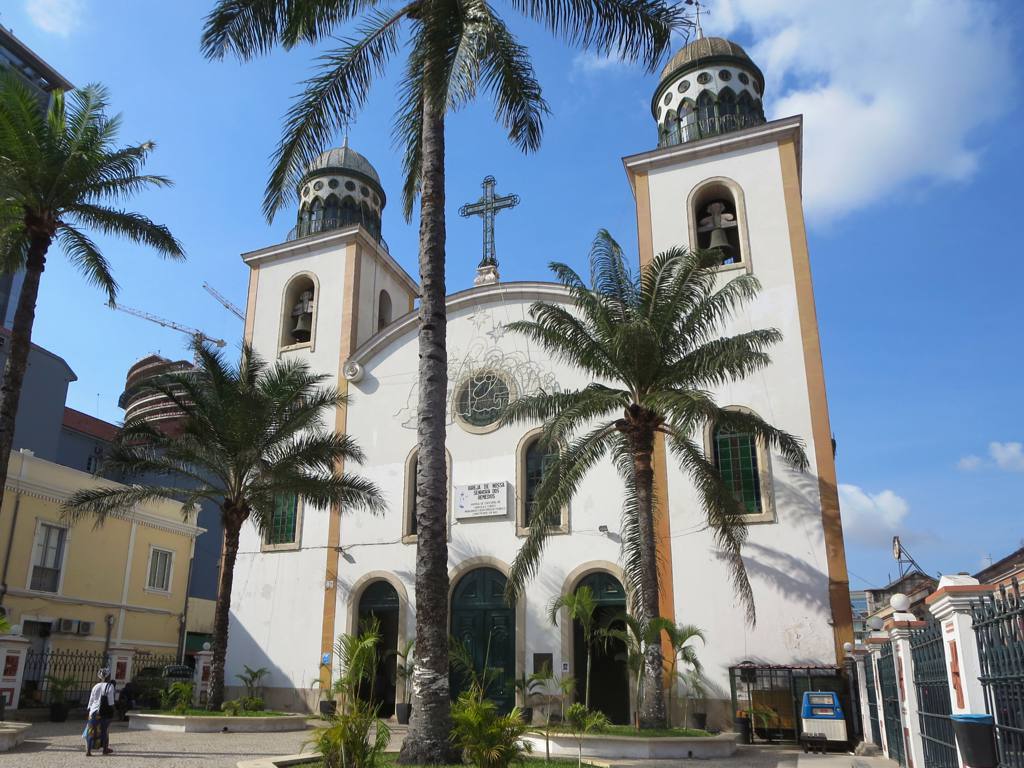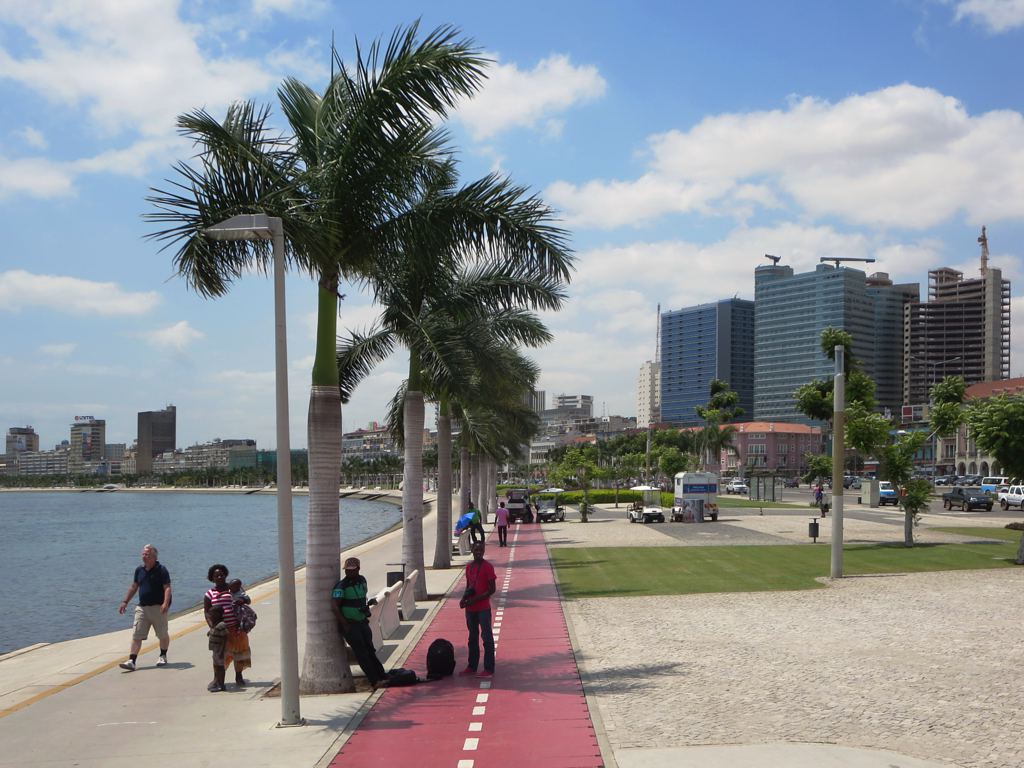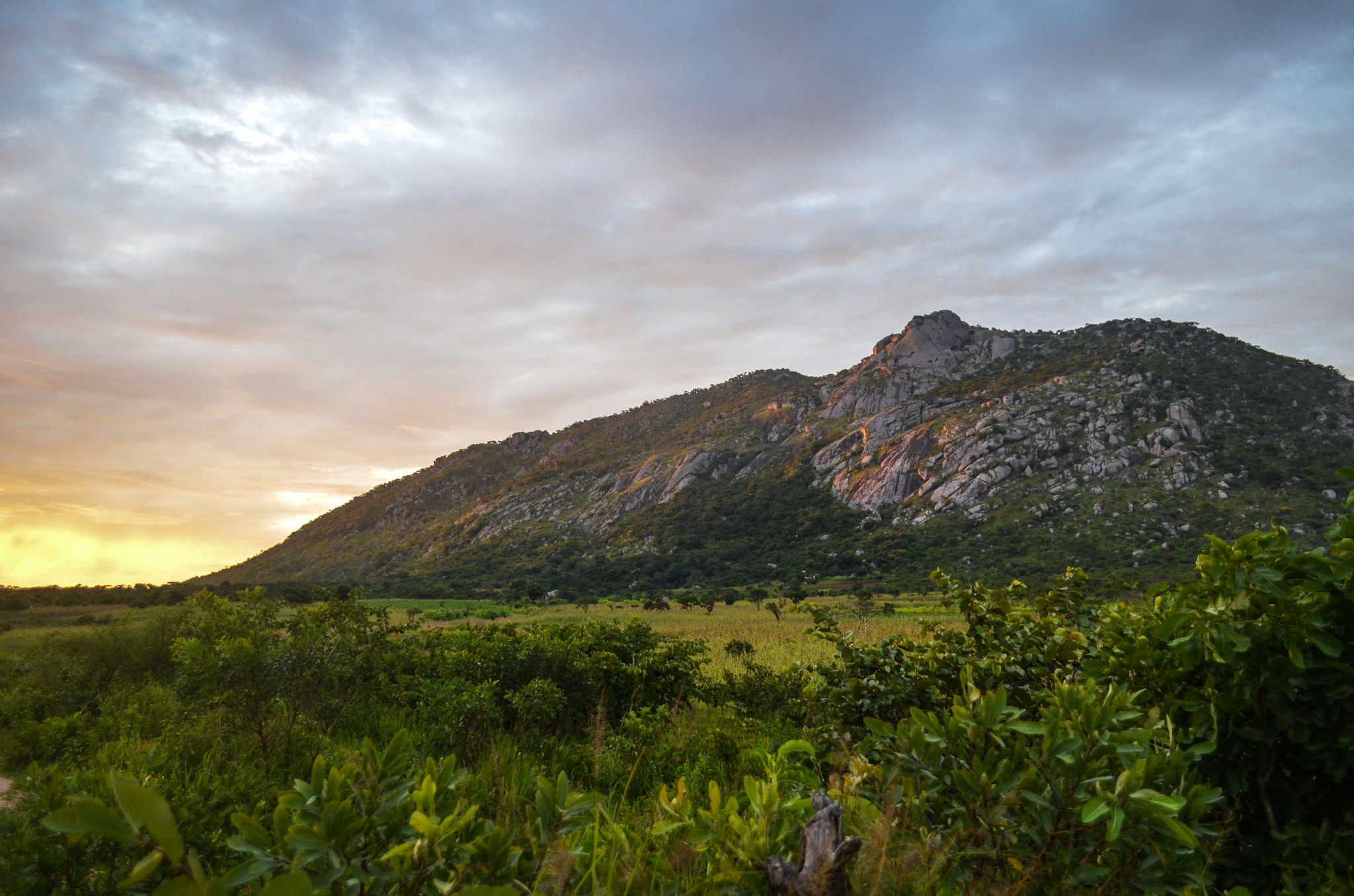Luanda, Angola’s capital and largest city
Angola’s oil and diamonds attract business travellers and skilled expats to feed the needs of one of the world’s fastest-growing economies. To leisure travellers it offers sport fishing along its thousands of kilometres of coastline and game viewing in its newish preserves.
It is a country of breathtaking beauty. Deserts and rainforests. A kaleidoscope of butterflies and the spectacle of the Calendula waterfalls. It is a country haunted by its colonial past: the ruins of Portuguese towns reclaimed by tropical jungles dot the countryside.
But it is Luanda, the capital, that remains the beating heart of the Angola. It is a dynamic, unforgettable and seductive city that sits above half-moon-shaped bay, fringed with palm trees. A spit of land protects the harbour from the crashing blue-grey Atlantic.

The Terminal Maritimo de Passageiros stands next to Luanda’s port entrance. (Image: David Stanley, CC BY 2.0, via Flickr)
Luanda is growing. No longer is it, in the words of Angolan author Jose Eduardo Agualusa, the “little city in the suburbs of the world”.
Head to the city’s social hub, the neighbourhood of Mussulo, a finger of land covered in coconut palms, bungalows and bars. Enjoy the sandy beaches where you can join the locals to watch luminous sunsets while downing a cold beer and mufete: a local delicacy of beans stewed in palm oil, served with grilled fish, onion vinaigrette, boiled plantains, yucca and sweet potatoes.
Cidade Alta, the heart of what was colonial Luanda, is still moody and full of character. On Ilha, home of Luanda’s best rest restaurants, you can enjoy Angolan cuisine, influenced by its well-fished coastline and 500 years of Portuguese colonial history.

Built in 1628, the Igreja de Nossa Senhora dos Remedios (Cathedral of the Holy Saviour) is the seat of the Roman Catholic Archbishop of Luanda. (Image: David Stanley, CC BY 2.0, via Flickr)
The city does not offer much in the way of museums and public parks. Much of its architectural past is being torn down to make way for Angola’s newfound prosperity. Angolan historians are fighting to save what’s left of the Luanda’s colonial and slave history, claiming the city’s oldest buildings to house Museu de Historia Natural, Museu Central das Forcas.
Visit the Palacio de Ferro, built by Gustave Eiffel (remembered for the Eiffel Tower in Paris), which was transported in its entirety to Luanda in 1902 after the Paris Universal Exhibition. The city is also home to two churches dating from the 17th century: Igreja de Nossa Senhora de Nazare and Igreja de Nossa Senhora dos Remedios.

The Marginale promenade (Avenida 4 de Fevereiro) runs all along the south shore of the Bay of Luanda. (Image: David Stanley, CC BY 2.0, via Flickr)
A visit to one of the few remaining sobrados, homes built by slavers 300 years ago, with their floors constructed with wood from slave ships that returned empty from Brazil. These dwellings give you a glimpse into the wealth the slave trade created for some. Or walk by the restored colonial building that houses the National Bank of Angola on the Marginale, the wide avenue that runs along Luanda Bay.
On Marginale, you can catch a glimpse of the Fort of Saint Miguel, the old Portuguese fort that protected the city for hundreds of years. Today it houses a museum to the violent recent past that Angola is shaking off.

A landscape near Chila Tikita reveals the breathtaking beauty that is Angola. (Image: JB Dodane, CC BY-NC 2.0, via Flickr)
TOP IMAGE: Built by Portuguese colonists in 1576 to protect the south end of the bay of Luanda, the Fortaleza de Sao Miguel (Fort of Saint Miguel) watches over the city’s rapidly growing skyline. (Image: David Stanley, CC BY 2.0, via Flickr)
- Words: Sulaiman Philip
- Editing, photo research and captions: Mary Alexander


